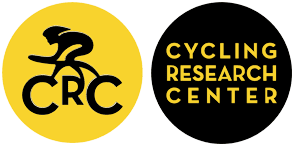Thresholds in ventilation, cerebral and muscle oxygenation, and muscle activity during incremental cycling exercise
Abstract
Introduction: Cycle time-trial performance is a function of the highest sustainable power output. The first (VT-1) and second (VT-2) ventilatory thresholds are practical tools for coaches and athletes to set training zones and exercise intensity. Specifically, VT-2 is closely linked to critical power, a primary determinant of endurance performance. The cascade of physiological events in the organs responsible for power production accompanying these respiratory thresholds remains contentious and yet to be fully characterized. Electromyographic (EMG) thresholds have been identified in leg muscles during incremental exercise while near infrared spectroscopy (NIRS) has revealed thresholds in both muscle deoxygenation and cerebral oxygenation towards the end of an incremental exercise test. However, the relative timing of the different muscle and brain oxygenation and muscle electrical activity responses to each other is unclear.
Purpose: The aim of the present study was to examine the thresholds of cerebral and muscle oxygenation, along with muscle electrical activity during a ramp exercise test in relation to VT-1 and VT-2.
Methods: Twenty-five recreational cyclists (mean±SD: age 37±8yrs, body mass 78±13kg, height 178±8cm, VO2max 53±8mL/kg/min) completed a ramp exercise test to exhaustion on an electromagnetically braked cycle-ergometer with a work rate increment of 25 W/min. Throughout the test, continuous measures of expired gas (breath-by-breath), prefrontal cortex and vastus lateralis (VL) oxygenation via NIRS, and EMG Root Mean Square activity for the VL, rectus femoris (RF), and biceps femoris (BF) muscles were recorded. Thresholds were defined by a double-linear model.
Results: The results are summarized in Figure 1. VT-1 and VT-2 occurred at 57 ± 6% and 81 ± 6% of the exercise, respectively. There was a threshold in both cerebral deoxyhaemoglobin and oxyhaemoglobin (56±13% and 56±8% of exercise, respectively) which were not significantly different from VT-1 (P>0.86, cohens d<0.1). Cerebral deoxyhaemoglobin further increased (87 ± 10% of exercise) while oxyhaemoglobin reached a plateau (86±8% of exercise) both significantly after VT-2 (P<0.05, d>0.8). Only one threshold could be identified for muscle parameters with a threshold in muscle oxyhaemoglobin (78±9% of exercise), attenuation in muscle deoxyhaemoglobin (80±8% of exercise), and increase in EMG activity of VL, RF and BF (89±5%, 82±14% and 85±9% of exercise, respectively). The thresholds in BF and VL EMG activity occurred after VT-2 (P<0.05, d>0.6).
Conclusion: The threshold in cerebral oxygenation parameters occurred at both VT-1 and VT-2. Conversely, the present investigation failed to support a role for VL muscle oxygenation and electrical activity at VT-1, but did display a threshold at or after VT-2. The changes in cerebral oxygenation and in BF and VL electrical activity occurred after VT-2, suggesting that the metabolic and ventilatory events characterizing this latter cardiorespiratory threshold may affect both cerebral and muscle oxygenation levels and subsequent muscle recruitment responses. These physiological mechanisms are important factors in describing key training concepts and performance capability; for instance critical power. Any marked rise in muscle recruitment above VT-2 or critical power will result in early onset of fatigue and limit exercise performance.
Downloads
Published
How to Cite
Issue
Section
Copyright (c) 2015 Journal of Science and Cycling

This work is licensed under a Creative Commons Attribution-NonCommercial 4.0 International License.
Authors contributing to Journal of Science and Cycling agree to publish their articles under a Creative Commons CC BY-NC-ND license, allowing third parties to copy and redistribute the material in any medium or format, and to remix, transform, and build upon the material, for any purpose, even commercially, under the condition that appropriate credit is given, that a link to the license is provided, and that you indicate if changes were made. You may do so in any reasonable manner, but not in any way that suggests the licensor endorses you or your use.
Authors retain copyright of their work, with first publication rights granted to Cycling Research Center.






